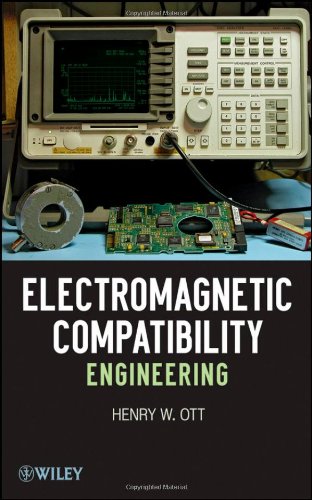

Most ebook files are in PDF format, so you can easily read them using various software such as Foxit Reader or directly on the Google Chrome browser.
Some ebook files are released by publishers in other formats such as .awz, .mobi, .epub, .fb2, etc. You may need to install specific software to read these formats on mobile/PC, such as Calibre.
Please read the tutorial at this link: https://ebookbell.com/faq
We offer FREE conversion to the popular formats you request; however, this may take some time. Therefore, right after payment, please email us, and we will try to provide the service as quickly as possible.
For some exceptional file formats or broken links (if any), please refrain from opening any disputes. Instead, email us first, and we will try to assist within a maximum of 6 hours.
EbookBell Team

4.8
84 reviews"Henry Ott has literally 'written the book' on the subject of EMC. . . . He not only knows the subject, but has the rare ability to communicate that knowledge to others."
—EE Times
Electromagnetic Compatibility Engineering is a completely revised, expanded, and updated version of Henry Ott's popular book Noise Reduction Techniques in Electronic Systems. It reflects the most recent developments in the field of electromagnetic compatibility (EMC) and noise reduction¿and their practical applications to the design of analog and digital circuits in computer, home entertainment, medical, telecom, industrial process control, and automotive equipment, as well as military and aerospace systems.
While maintaining and updating the core information—such as cabling, grounding, filtering, shielding, digital circuit grounding and layout, and ESD—that made the previous book such a wide success, this new book includes additional coverage of:
Equipment/systems grounding
Switching power supplies and variable-speed motor drives
Digital circuit power distribution and decoupling
PCB layout and stack-up
Mixed-signal PCB layout
RF and transient immunity
Power line disturbances
Precompliance EMC measurements
New appendices on dipole antennae, the theory of partial inductance, and the ten most common EMC problems
The concepts presented are applicable to analog and digital circuits operating from below audio frequencies to those in the GHz range. Throughout the book, an emphasis is placed on cost-effective EMC designs, with the amount and complexity of mathematics kept to the strictest minimum.
Complemented with over 250 problems with answers, Electromagnetic Compatibility Engineering equips readers with the knowledge needed to design electronic equipment that is compatible with the electromagnetic environment and compliant with national and international EMC regulations. It is an essential resource for practicing engineers who face EMC and regulatory compliance issues and an ideal textbook for EE courses at the advanced undergraduate and graduate levels.